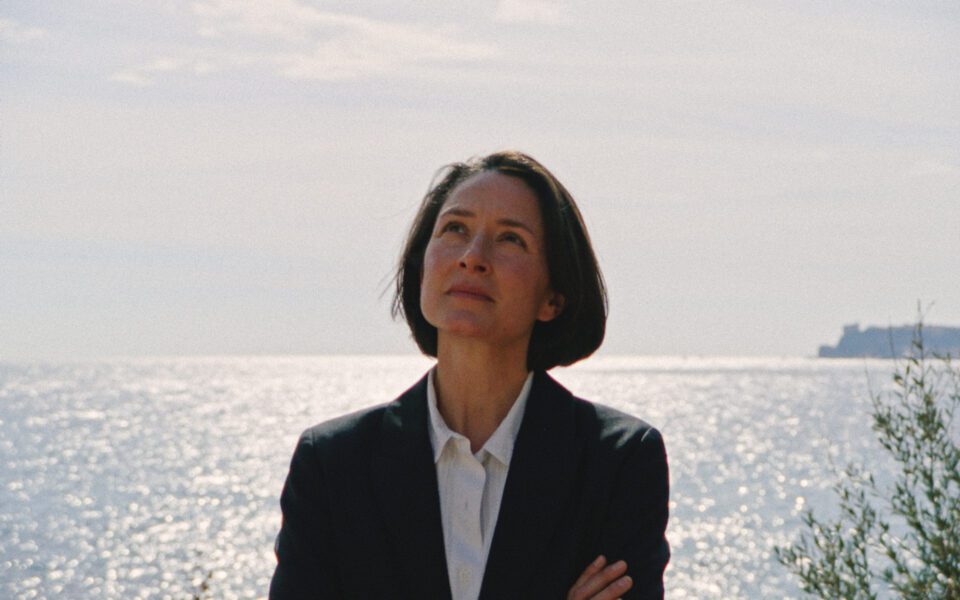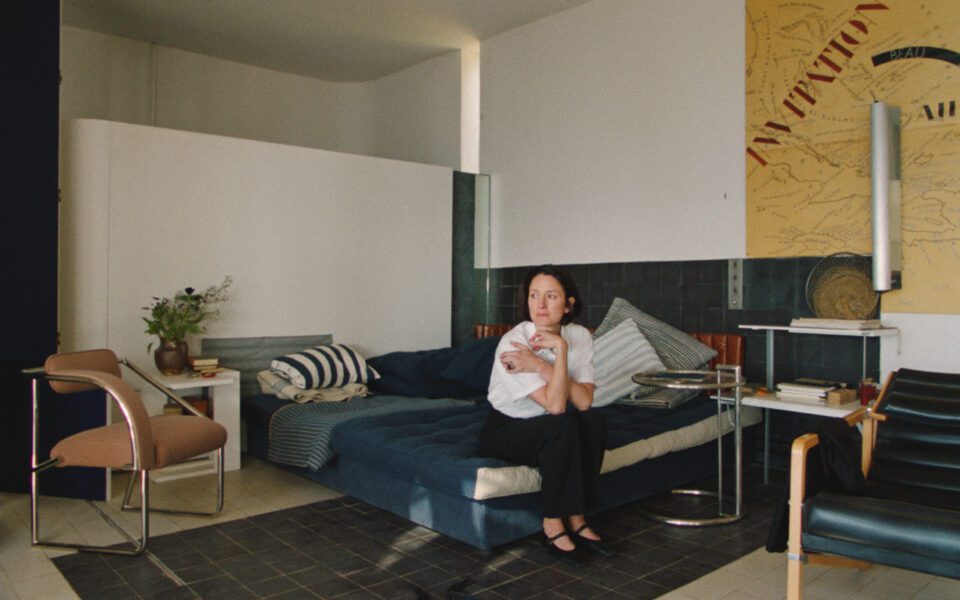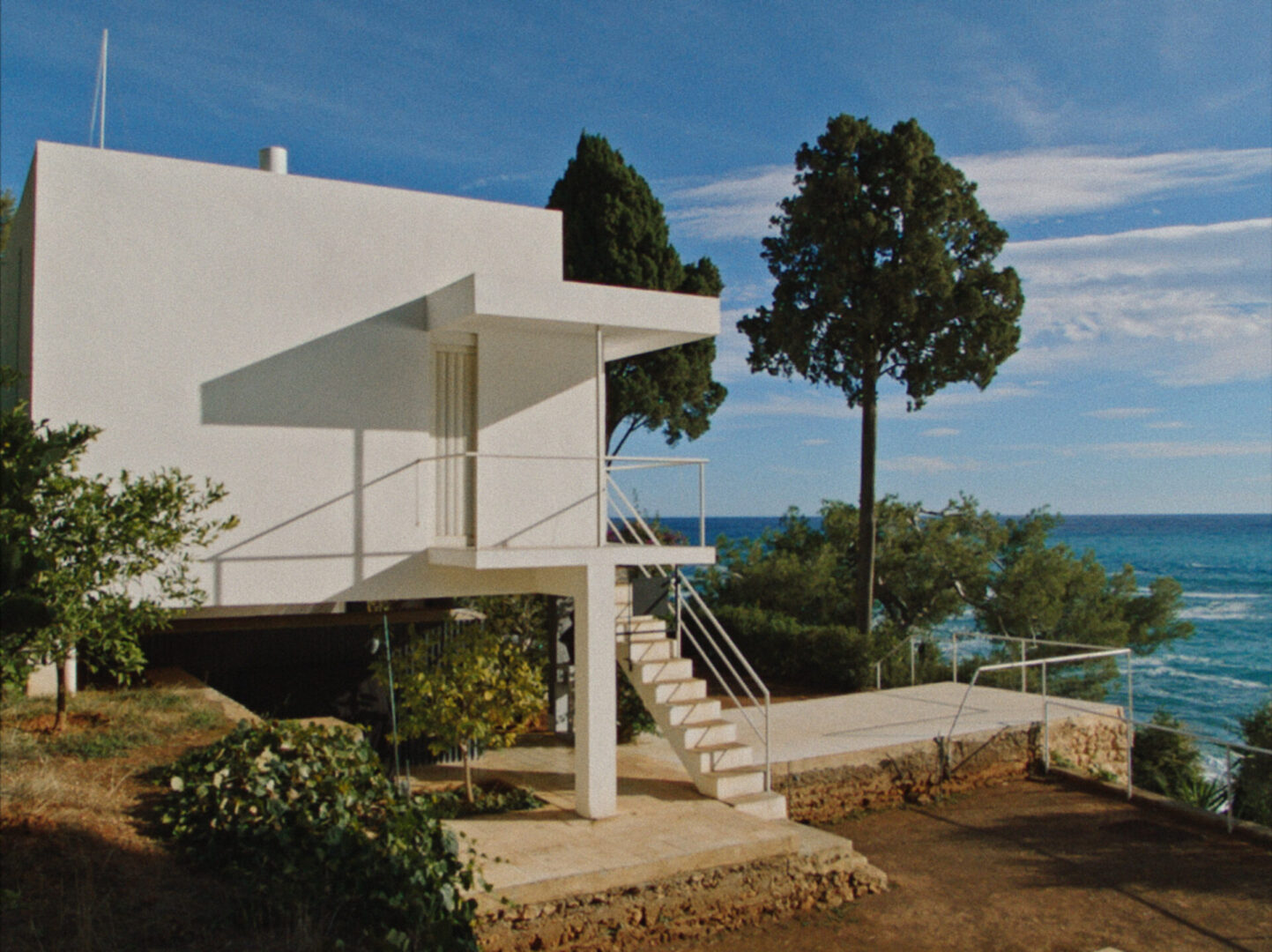Architecture, with its combination of mathematical rigor and artistic vision, is an artform which attracts a particular kind of obsession. It is simultaneously rooted in material realities – the fundamental properties of stone, metal and glass, or the precise calibration of physical forces – and in the outer reaches of the imagination – seemingly impossible manipulations of space, light and balance. Visionary architecture pushes its practitioners to the physical and mental limit.
The recent success of Brady Corbet’s The Brutalist was fuelled partly by a fascination with the architect as an archetype, an enigmatic figure driven by ruthless logic and divine inspiration. Although different in its approach, E.1027: Eileen Gray and the House by the Sea touches upon similar themes, whilst offering an intriguing feminist rewriting of modern design history and macho stereotypes of the architect.

In the late 1920s, the Irish designer and self-taught architect Eileen Gray built a house on the French coastline near Monaco. A white open plan cube perched on craggy rocks above crashing waves, this building was at the cutting edge of the emerging modern architecture movement. Gray named the house E.1027, drawing on her own initials and those of her lover, the writer Jean Badovici. After the end of their relationship, Gray abruptly moved out and Badovici took over the property, hosting frequent parties attended by bohemian friends, including Le Corbusier, who rapidly developed his own obsession with the house. A shocking act of artistic vandalism saw Le Corbusier begin to claim ownership of E.1027, erasing Gray’s authorship from architectural history.

The story of Gray’s life has attracted several screen treatments, including Mary McGuckian’s drama The Price of Desire (2015) and a documentary Gray Matters (2014) from Marco Orsini. In E.1027: Eileen Gray and the House by the Sea, Swiss filmmakers Beatrice Minger and Christoph Schaub combine those two approaches, offering an experimental hybrid of reenactments, archive and documentary footage. Actors Natalie Radmall-Quirke, Charles Morillon and the splendidly named Axel Moustache play Gray, Le Corbusier and Badovici respectively, in a series of theatrical scenes set on a soundstage. Episodes from the protagonist’s lives are reenacted in minimalist exchanges, sometimes accompanied by projected archive images depicting scenes from 1920s Paris and key avant-garde works (including clips of films by Germaine Dulac, Man Ray and Hans Richter). The only “real” location used is the house and its nearby coastline. This creates an impression of E.1027 as a universe within itself, removed from the outside world. Thanks to this technique, when that sanctuary is violated by Le Corbusier’s violent takeover, the sense of loss is palpable.

This is a story underpinned by powerful emotions – irrational passions, obsessive jealousy, destructive possessiveness – but in Minger and Schraub’s hands those strong feelings roil under an impassive, austere surface. Like the white walls and clean lines of the titular house, Eileen Gray and the House by the Sea is meticulously calibrated and controlled, a pristine expanse of glass and concrete, alternately transparent and opaque. The effect is sometimes alienating – a dispassionate first person voiceover from Radmall-Quirke soon becomes monotonous – but the film’s commitment and rigor nevertheless impresses. A final credit sequence, in which the actors, in costume as Gray, Badovici and Le Corbusier, perform a dance routine in a black box, injects a final note of playfulness. Here, the two men perform like backing dancers as Gray stands in front of them, as if finally taking her rightful place centre stage.
E.1027 – Eileen Gray and The House by The Sea is in UK & Irish cinemas from 16 May: modernfilms.com
Words: Rachel Pronger
Image credits:
E1027_Still_001_Â © Rise And Shine World Sales.
E1027_Still_003_Â © Rise And Shine World Sales.
E1027_Still_004_Â © Rise And Shine World Sales.
E1027_Still_006_Â © Rise And Shine World Sales.




